Photodynamic therapy in oncology: advantages and disadvantages
Oncological diseases are one of the first places in mortality among the population. In recent years, the number of cancerous tumors has sharply increased, which are diagnosed in patients. Unfortunately, they do not have any age restrictions - this disease affects the adult population, so it does not spare children.
In our time, more and more new methods of cancer treatment are being applied, medicine in this matter has advanced far ahead. One of such methods is photodynamic therapy in oncology. We will get acquainted with this method a little more in our article.
The concept of photodynamic therapy
This method of treatment has the abbreviated name of PDT, and its essence boils down to the use of light and certain groups of drugs called photosensitizers. Under the influence of light, a drug substance accumulated in a cancerous tumor begins to destructively affect its cells.
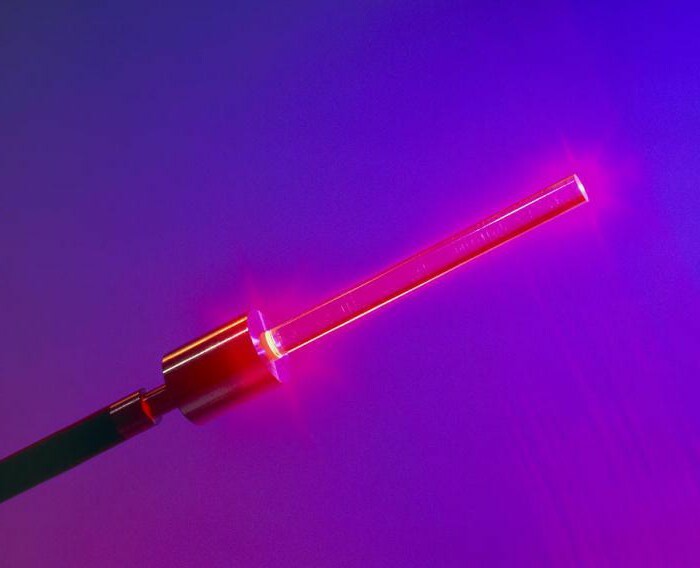
Depending on the location of the neoplasm, the drug may be injected into the bloodstream or applied to the skin. After a short period of time, it is absorbed by the tissues, and then a ray of light is directed to this section.
Let's analyze what his biophysics are. Photodynamic therapy in oncology after exposure to the light beam is reduced to chemical interaction involving oxygen, as a result of this, cancer cells are killed. With this therapy, you have to remove small blood vessels to deprive the swelling of the feed.
Stages of FD therapy for
Photodynamic therapy in oncology includes several stages:
- Introduction of a sensitizing solution intravenously.
- Accumulation of a drug in tissues affected by a cancerous tumor. Given the variety of tissues and drugs, this stage sometimes lasts up to several days. It is at this time, experts diagnose the tumor, based on the degree of concentration of the sensitizer.
- Stage of irradiation of the tumor with laser beams. If the cancer tumor is too deep, then LED tubes are used to deliver the rays. Under the influence of the laser begins a toxic reaction, as a result of which cancer cells die, while neighboring healthy tissues are not affected.
- Stage of disintegration of a cancerous tumor and restoration of tissues that have undergone mutation. Duration is about a month.
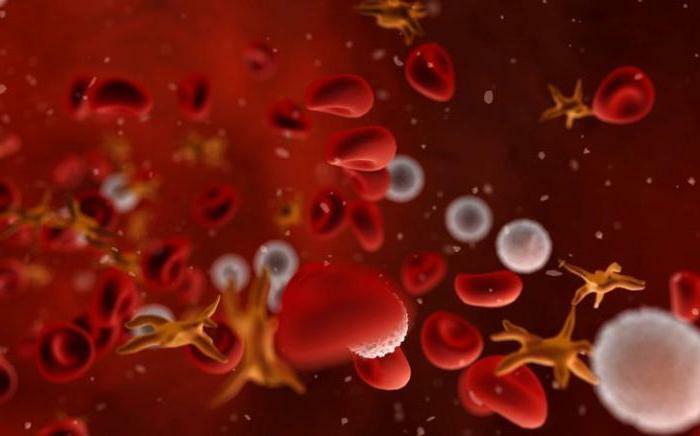
How photodynamic therapy is used in oncology
This type of therapy serves to significantly improve the quality of life of patients. PDT has no long negative effects, but it is not so widely used in all countries.
Photodynamic therapy in oncology in Moscow has been in use since 1998. At present, there are 5 rooms in the capital in which this procedure is carried out. Already about 2 thousand patients received treatment with this method.
Contact PDT was developed and used in the Oncological Clinical Dispensary No. 1.Laser irradiation, which is carried out in this way, allows to increase the depth of penetration of the rays to 2 cm.
Advantages of this method of treatment
PDT is an innovative method for combating cancer and precancerous formations. Currently, at the initial stages of oncology, he is trying to apply, since photodynamic therapy in oncology has enormous advantages:
- There is an opportunity to work only on cancer cells.
- Patients easily tolerate the procedure at any age.
- Therapy has a sparing effect on organs and tissues affected by a cancerous tumor.
- In case of skin cancer, the procedure gives a 100% effective result.
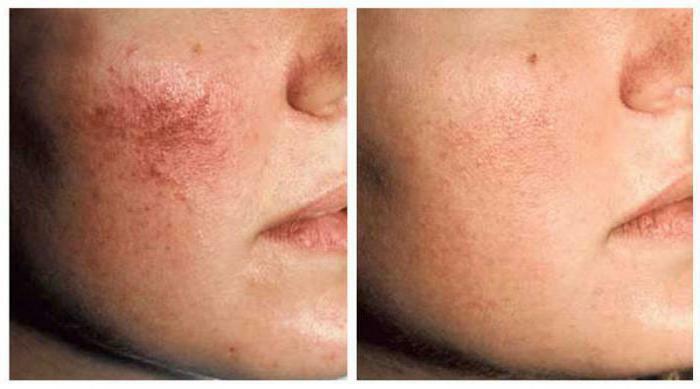
- With oncology of the cervix, this method is the most effective, as it allows to preserve the reproductive system of a woman.
- Treatment can be performed on an outpatient basis.
- You can reapply if necessary.
- Has no systemic complications.
- Using this method, it is possible to remove tumors in hard-to-reach places.
- During the procedure, the patient is conscious.
- The method is completely painless.
- Photodynamic therapy in oncology can be used as an independent method of treatment and as part of complex therapy.
The method has a destructive effect on cancer cells, as well as virucidal( capable of destroying human papilloma virus), fungicidal, bactericidal and immunomodulating. The presence of such a large number of advantages makes it popular.
Disadvantages of the
method In addition to a lot of advantages, the method has its drawbacks:
- Therapy is limited to light access. That is, the part that lies directly under the skin lends itself to treatment. Because of this, it is impossible to use a method to get rid of cancer cells that have spread over virtually all organs and tissues.
- After photosensitizers, sensitivity to light persists for some time.
But from the listed it is still visible, that the photodynamic therapy in oncology deficiencies has absolutely insignificant.
Indications for the use of the
method It should be noted that PDT is used not only to get rid of cancerous tumors, but also for the treatment of psoriasis, vitiligo, lupus and other skin diseases. Photodynamic therapy is used to get rid of various forms of cancer and therapy of precancerous conditions. It is effective in eye diseases and dermatological problems.
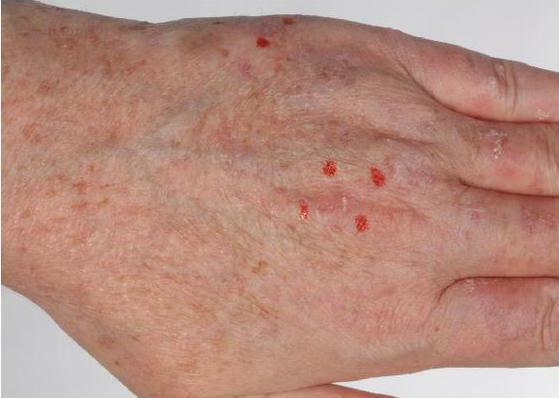
In addition, the method described treats non-healing wounds and trophic ulcers.
To whom is not indicated the procedure of PDT
Photodynamic therapy in oncology contraindications has, but insignificant. It is not performed:
- if there are kidney and liver pathologies;
- in the stage of decompensation of cardiovascular disease;
- with excessive sensitivity to the drug;
- for blood diseases.
The method is contraindicated both during the period of gestation and during the period of breastfeeding.
Photodynamic therapy in oncology should be applied only after consultation with a physician so that all available contraindications can be identified.
Used drugs in therapy
For this method of treatment, oncologists use medicines that can be divided into two groups:
- First generation sensitizers, with porphyrins.
- Photosensitizers of the second generation.
Regardless of the group, the drug has specific requirements:
- has the property of concentrating in large numbers in cancerous tumors and does not penetrate into healthy tissues;
- after the procedure is quickly eliminated from the body and has a low toxicity;
- does not accumulate in the skin;
- has resistance to storage and introduction into the bloodstream;
- has fluorescent qualities.
Overview of preparations for PDT
The method of photodynamic therapy in oncology is often used with the use of the drug "Photofrin".It is activated with the help of red color. And they use it in the therapy of the following conditions:
- Cancers of the larynx. After the procedure, the patient feels better, especially when using the drug, when the tumor reaches a size that almost blocks the larynx, and laser therapy can not cope with it.
- Esophagus of Berret. The drug is used as a preventive procedure to prevent the development of oncology.
- Lung cancer.
Aminovivulinic acid is used in the case of senile keratosis. It is applied directly to the skin and is activated in blue. Can be applied only on the face and head.
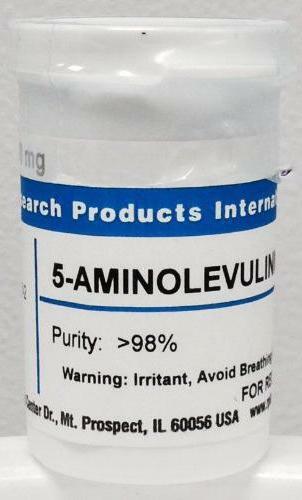
There are other drugs, but they are used much less often.
The process of treatment with "Fotofrina"
The named drug is injected into the body intravenously. Penetrating inside, it begins to absorb not only cancer cells, but also healthy throughout the body. Absolutely healthy cells within a few days will be completely cleared of the substance, and in cancerous cells it will be preserved.
But if you do nothing further, nothing will happen to the tumor. The reaction begins only when there is an effect of light, with a certain wavelength, on the cells.
If a procedure is needed to cure lung cancer, then a bronchoscope is used to get the most out of the affected tissue. Doctors for PDT use a laser with a small power, so no burns to tissues are not threatened. 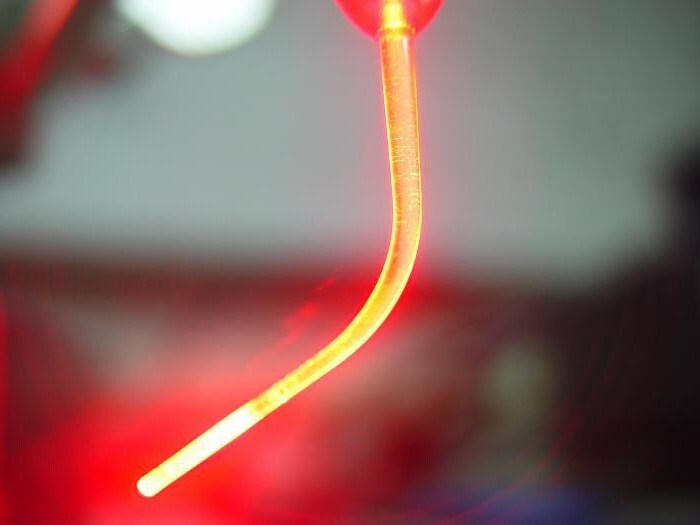
The duration of the procedure depends on the size of the tumor and its location( usually from 5 to 45 minutes).Dead cells and tissues disappear within a few days. After verification, if necessary, repeat the procedure.
It should be noted that therapy with the use of "Photofrin" is not allowed to all, it is contraindicated, if there is:
- fistula between the esophagus and bronchi;
- is a cancerous tumor that spreads through large blood vessels;
- stomach ulcer or enlarged veins;
- is an allergy to the drug.
All questions are necessarily discussed with your doctor before the procedure.
Side effects of PDT
The most common side effect of the procedure using "Photofrin" is increased photosensitivity. Sometimes there is still a swelling in the place of treatment and a slight soreness.
Once the drug enters the body, it accumulates in cells and tissues and after a few days, and sometimes even weeks, after the procedure can remain in the cells. All this time the patient's eyes and skin are sensitive enough to light. From bright light, unprotected areas begin to swell and blister in just a few minutes.
This sensitivity can last for several months, it all depends on the characteristics of the body. It is necessary all this time to avoid direct sunlight, but this does not mean that it is necessary to sit in a dark room. Dosed daylight helps to destroy the substance in the cells and helps to restore them.
Gradually the sensitivity will decrease, and you can check it, but not earlier than one month after PDT.
In the role of other effects, swelling in the site of therapy may occur. If the procedure was performed on the throat, then at first there will be problems with swallowing, and after manipulations on the lungs - with breathing. If you find these symptoms, you should immediately call your doctor. Other side effects include the following:
- nausea, vomiting, headache, hiccups - if PDT was performed on the esophagus;
- shortness of breath, development of bronchitis or pneumonia - may be after lung treatment.
All such manifestations must be notified to the doctor.
Recommendations after therapy with
You can avoid significant side effects after therapy if you know how to prepare for it and behave correctly after the procedure. For this, the following recommendations should be observed:
- When going to a hospital for photodynamic therapy, it is necessary to close all windows and curtains at home, and also to ensure that the lamps are protected by lampshades or in another way.
- Take with you to the hospital necessarily sunglasses, headgear( preferably a hat with wide margins) to protect the face. Clothing should have a long sleeve, and on the legs - trousers and socks( in this situation, the hope for sunscreen is small).
- After the procedure for 30 days, it is advisable not to be on the street at noon hours, and when leaving, it is imperative to protect the skin even in cloudy weather.
- All urgent and urgent cases should be moved to the evening.
- At home reading must be protected from direct light from the lamp.
- After washing your head, do not use a dryer to dry it - hot air can activate the remaining substance in the cells and provoke redness and burn.
If you comply with all these recommendations, then photodynamic therapy in oncology efficiency will show the maximum, and the patient will be satisfied with the result.
Reviews on the procedure
Any method of therapy can not be equally successfully applied to treat all patients. But photodynamic therapy in oncology reviews is mostly good. Patients note that after the procedure their condition improved markedly, this is especially true of cancerous tumors on the skin, other skin diseases. After PDT, there is almost no scars left, the skin becomes cleaner.
Patients report painlessness of therapy, a small number of side effects. But it should be noted that almost all patients talk about increased photosensitivity after the procedure. You have to avoid bright light and protect your eyes and skin from getting hit.

Photodynamic therapy in oncology reviews is negative only in those who did not follow the doctor's recommendations and did not report on the concomitant diseases. It should be noted that with cancer of the larynx or lungs, the therapy is complex, and after it there may be problems with swallowing and breathing, but these are temporary phenomena that will gradually pass.
After treatment, almost all patients are satisfied with the result, especially if the procedure was carried out by a highly qualified specialist. Thus, photodynamic therapy in oncology in Novosibirsk is studied by the remarkable professor Sergei Danilovich Nikonov. He developed PDT for the brain, as well as a method for the therapy of carcinomatous pleurisy, on this occasion he published a lot of publications and scientific papers.
Other cities also have clinics that specialize in treating cancer in the manner described. Photodynamic therapy in oncology in Krasnodar is available in the clinical oncological dispensary No.1.This medical institution is equipped with the latest technology, so patients in the success of treatment can not doubt.
Fortunately, at the present time even such a terrible disease as cancer is not a verdict. The most important thing is to reveal it at the stage when it can be successfully coped with. And for this, just something to take more care about your health and regularly undergo medical examinations. Take care of yourself and be well!
